by Dennis Villegas
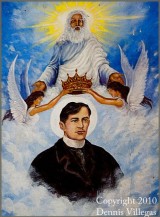 For the people of Calamba, June 19 is the Grand Fiesta Day of all, being the birth anniversary of Dr. Jose Rizal, Philippine National Hero and the town’s most illustrious son.
For the people of Calamba, June 19 is the Grand Fiesta Day of all, being the birth anniversary of Dr. Jose Rizal, Philippine National Hero and the town’s most illustrious son.
In 2010, on the 149th anniversary of Rizal’s birth, the whole town mounted a spectacular celebration to honor the National Hero. Colorful flags and banners were hung about in the streets or waved by people, some of whom traveled from the farthest corners of the province to make a pilgrimage to the hero’s hometown.
After the usual ceremonies and toasts, the pilgrims trooped to the old Rizal house, bringing with them twigs and flowers for the revered hero. Afterwards, a parade of garlanded floats rolled its way all around town, followed by music bands and street dancers. Even the weather seemed to pay tribute to the great Dr. Jose Rizal: the sun was up and bright, the skies blue and radiant.
Indeed, even though Rizal has been dead for 114 years (as of 2010, when the article was written -Ed.), he still commands a very strong presence in Calamba. In fact, Rizal Day or not, one can hardly pass by Calamba without seeing his posters and statues displayed prominently on buildings and streets. Rizal is forever enshrined in the hearts and memory of the Calambenos, the beloved hero who gave up his life for our country.
What if Rizal still lived?
Unbeknownst to many of us, Rizal is still living, 114 years after he was supposed to have been killed by the Spaniards. The man executed in Bagumbayan field at 7:03 in the morning of December 30, 1896 was a fake, a Rizal double. The genuine Rizal was not killed but still lives and walks among us. He is not a ghost, but a real man of flesh and blood although now very old, with wrinkled skin and grey hair, beard and moustache, but still wearing the same double-breasted coat he always wore, and carrying the Noli and Fili books in his right hand. At present, he has hidden himself somewhere in the forests and caves of Mount Makiling.
Such is the belief of the Rizalista groups in Barrio Lecheria, in Calamba, Laguna. For them, Rizal is God Himself, the Alpha and the Omega, the Kristong Kayumanggi, The Jove Rex Al (God King of All), the King of Kings, the Savior of the Philippines, the New Jerusalem. There may be many different names, but He is only One.
This is rather bizarre to most of us, but the Rizalistas know better. From time to time the National Hero shows himself to a few of them in the barrio of Lecheria, Calamba, to assure them he is alive.
The hill of Lecheria, the center of Rizalist sects in Calamba, is a short drive from the Calamba town proper. It is nestled among the foothills of the mystical Mount Makiling. During the Spanish times, the hill was where the Dominican friars kept goats and cows for milking purposes, thus earning the name Lecheria. Now the hill is home to the Lecheria public cemetery, the chapels of the Rizalista sects, and the residences of its members. From the hill, one can view the lovely landscape of Calamba, the Laguna de Bay, the adjoining Laguna towns, and the imposing Mount Makiling.
Lecheria is believed by Rizalistas as the place where Rizal spent his youth, preached his gospels, and supposedly replicated the miracles of the Lord Jesus Christ. Here, Rizal healed people of their illnesses and fed hundreds with only a small basket of food. Indeed, Lecheria is so steeped in legend and lore about the amazing and wondrous adventures of young Rizal that each Rizalista has one or two amazing stories about him. One old Rizalista, Nanay Naty Rebenque, 80 years old, of the Iglesia Watawat ng Lahi, Inc., said to me: if we were to document all the miracles Rizal performed in Lecheria, we would not have enough paper to write them down on.
Fascinated with these amazing, if not altogether bizarre, stories, I decided to spend days and weeks going back and forth from Manila to Calamba to study the Rizalist cults in Lecheria. What I found out was more than what I was willing to find out.
The beginnings of the Rizalista sects in Lecheria
Originally, there was only one Rizalista group in Lecheria: the Iglesia Watawat ng Lahi that was founded in 1936. In 1987, however, the sect was wracked by schism among members and was, after tedious legal battles, eventually divided into four factions: The Samahan ng Watawat ng Lahi Presiding Elders*, Iglesia Watawat ng Lahi Malvarosa Faction, Iglesia ng Lipi ni Gat Dr. Rizal, and Pilipinas Iglesia Watawat ng Lahi.
In addition, there are other Rizalista groups that have been more recently formed, such as the Jerosalem Alpha at Omega, the Jerosalem Religious Group of the Philippines, the Pampara (Pambansang Makabayang Pananampalataya Para kay Dr. Jose Rizal), and, in far away Barrio Rongot, the Iglesia Sagrada Familia.
Historical account of Rizal’s birth
Looking back 149 years ago, in this small peaceful Calamba town, the boy Jose Rizal was born on June 19, 1861. He was the seventh among the 11 children of Don Francisco Mercado and Dona Teodora Alonso. Older than Rizal were Saturnina, Paciano, Narcisa, Olympia, Lucia, and Maria. His younger siblings were Concepcion, Josefa, Trinidad, and Soledad. It seemed that Rizal’s birth was a difficult one, almost costing the life of his mother. Thankfully she survived, and as a result, his father, Don Francisco, vowed to bring the child Jose to a yearly pilgrimage to Antipolo for the first seven years of his life. The baby was baptized in the Roman Catholic Church of Calamba by Father Rufino Collantes with Rev. Pedro Casanas standing as sponsor.
Those are the quick facts one can gather on Rizal’s birth and family, as told and retold in hundreds of Rizal biography books, notably the standard biographies by Rafael Palma (Biografia de Rizal), Leon Ma. Guerrero (The First Filipino), and Austin Coates (Rizal: Philippine Nationalist and Martyr).
Their biographies, however scholarly written, largely ignored the Rizalista beliefs about the life of Jose Rizal. I discovered that there are “spiritual” versions of Rizal’s birth that are shrouded in mystery. I decided to meet and interview some of the elders of the Rizalistas in Lecheria, Calamba to find out their version.
Rizalista chapels
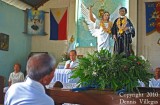 The chapels of the Rizalistas are simple one-story nondescript structures similar to the small bisita iglesia of the Philippine Roman Catholic, except that they have statues and huge pictures of Rizal displayed prominently on the altars. On top of the altar is the single Eye enclosed in a triangle, which according to folk beliefs, is the symbol of theInfinito Dios (Everlasting God). In other parts of the altar can be seen various statues and paintings representing God the Father with white hair and beard, Jesus Christ, the Virgin Mary, the Santisima Trinidad, and a white dove representing the Diyos Espiritu Santo. There are also portraits of other Filipino heroes like Andres Bonifacio, Marcelo H. Del Pilar, General Miguel Malvar, Fathers Gomez, Burgos and Zamora, Antonio Ma. Regidor, Jose Maria Basa, and Apolinario Mabini. The Philippine flag is also displayed in some prominent corner.
The chapels of the Rizalistas are simple one-story nondescript structures similar to the small bisita iglesia of the Philippine Roman Catholic, except that they have statues and huge pictures of Rizal displayed prominently on the altars. On top of the altar is the single Eye enclosed in a triangle, which according to folk beliefs, is the symbol of theInfinito Dios (Everlasting God). In other parts of the altar can be seen various statues and paintings representing God the Father with white hair and beard, Jesus Christ, the Virgin Mary, the Santisima Trinidad, and a white dove representing the Diyos Espiritu Santo. There are also portraits of other Filipino heroes like Andres Bonifacio, Marcelo H. Del Pilar, General Miguel Malvar, Fathers Gomez, Burgos and Zamora, Antonio Ma. Regidor, Jose Maria Basa, and Apolinario Mabini. The Philippine flag is also displayed in some prominent corner.
All Rizalistas, regardless of the sect they belong to, subscribe to more or less the same set of beliefs. For instance, all of them believe that Rizal is God Himself. He took on a human form, much like what Jesus Christ did 2,000 years ago. In fact, Jesus Christ and Jose Rizal led parallel lives even though they lived two millennia apart. Both were conceived by a virgin, were Asians, advocated the equality of all human beings, were born in a small country under a foreign rule, performed miracles, advocated the Golden Rule, healed people, were maligned and persecuted, and gave up their lives for the people.
Be that as it may, the concept of Rizal as Christ reincarnated is wrong. Some Rizalistas believe that Rizal is a higher divinity than Jesus Christ. One Rizalista sect, the Mariang Sinukuan cult in Arayat, Pampanga, even believed that Jesus Christ never even existed.
First version of Rizal’s birth
According to the Rizalistas, Rizal’s birth was prophesied in the Bible, specifically in the Book of Revelation, Chapter 12, verses 1-5:
A great and wondrous sign appeared in heaven: a woman clothed with the sun, with the moon under her feet and a crown of twelve stars on her head. She was pregnant and cried out in pain as she was about to give birth. Then another sign appeared in heaven: an enormous red dragon with seven heads and ten horns and seven crowns on his heads. His tail swept a third of the stars out of the sky and flung them to the earth. The dragon stood in front of the woman who was about to give birth, so that he might devour the child the moment it was born. She gave birth to a son, a male child, who will rule all the nations with an iron scepter. And her child was snatched up to God and to his throne.
The symbolism of these verses, as interpreted by Supreme Bishop Pedro Reblando of the Iglesia Watawat ng Lahi, is as follows:
The pregnant woman clothed with the sun and crowned with the stars is none other than Inang Bayan Pilipinas, a woman clothed with the sun and stars of the Philippine flag. The child she is bearing is Amang Gat Jose Rizal who will rule all the nations with an iron scepter. The Dragon mentioned is Spain who was then colonizing Pilipinas, and the dragon’s Seven Heads, Ten Horns and Seven Crowns were Spain’s organizations and empires in the world. The dragon was waiting for the birth of the child so that it could devour him the moment he comes out.
The coming of God Rizal into this world to save the Philippines and all nations is therefore the fulfillment of this biblical prophecy.
There are, however, diverse versions on how God Rizal descended from Heaven, and born as a child on earth.
Mr. Lito Penamante, 47, an elder of the Jerosalem Religious Group of the Philippines recounted the following story:
Diyos Rizal is one of the four Supreme Kings in Heaven. The other three are the Diyos Ama (God the Father), Diyos Anak (God the Son), and Diyos Espiritu Santo (God the Holy Spirit). However, it must be noted that they are only One God, or Quadro Personas (a slight variation of the Santisima Trinidad or Holy Trinity of the Roman Catholic Church).
One day, Diyos Rizal, Diyos Ama, Diyos Anak, and Diyos Espiritu Santo had a conference in heaven because they had a problem: they were worried about the Philippines which was then being oppressed by Spain. They wanted to save the country from the Spaniards. The meeting concluded with Diyos Rizal being assigned to take human form. Diyos Rizal was accompanied by the seven Archangels of heaven as he traveled to earth. Their journey started in 1786 and ended in 1861, a period of 75 years. It was not clear why it took them that long to reach the earth. Then finally on June 19, 1861, Diyos Rizal, a spirit, arrived on earth — but because of the different elements and climate conditions of the place, he was transformed into a baby boy. In other words, he was born as a human.
The seven Archangels went to the three mystical sisters Mariang Makiling, Mariang Sinukuan, and Mariang Banahaw and requested them to take care of the baby boy. Afterwards, the archangels went back to heaven. The three sisters named the baby Jove Rex Al. Jove is the secret name of God: Rex meaning King, and Al meaning all. Jove Rex Al thus means God, King of All. This eventually became Jose Rizal.
But the three sisters were worried about what people might say if they took care of the baby boy because they were all maidens! They therefore decided to find a couple to take care of the baby. They heard of a well-to-do couple who was reputed to be the most respected in town. One night, the three sisters went to the house of this couple named Francisco Mercado and Teodora Alonso. They left the child by the door but before doing so, they embroidered the name Jose Rizal on the baby’s cloth diaper so that the baby’s name would not be changed. The three sisters hurriedly left when they sensed that Don Francisco and Dona Teodora had waken to the sound of baby cries. The couple was overjoyed to see a baby left on their door step, and decided to take it as their own child. Moreover, during those times, it was considered lucky to be the foster parents of an abandoned child. Thus, Francisco Mercado and Teodora Alonso were not the real parents of Rizal. Rizal was, after all, a God. The couple did not know that they are taking care of God Rizal as a baby.
Mr. Penamente has devoted his life studying mysticism and the occult. He has become a Rizalist member of the Jerusalem Religious Group of the Philippines some 17 years ago.
Second version
This next version is interesting because it bears a strong parallelism to the birth of the Lord Jesus Christ. Nanay Naty Rebenque, 80, is one of the 24 elders of the Iglesia Watawat ng Lahi and a graduate of Watawat’s spiritual course on Mental Physics and Occult Sciences. She recounted to me how Rizal came to this world:
There was a couple named Emmanuel and Juana who lived in the forests of Mount Makiling. They had three unmarried daughters named Mariang Makiling, Mariang Sinukuan, and Mariang Banahaw. One day, an angel of God visited the eldest daughter Mariang Makiling while she was fetching water from a well. The angel told her she would be bearing the child who would save the Philippines from the Spaniards. Mariang Makiling got pregnant. As months went by, Mariang Makiling’s parents noticed that her belly was getting bigger. They demanded to know who the father of the child was. Maria could not tell her parents that she was bearing God in her womb. One night, Emmanuel and Juana were visited in a dream by an angel who told them they should not worry because Mariang Makiling was carrying God in her womb.
On the eve of Rizal’s birth, Mariang Makiling, accompanied by an angel, went to the house of a well-to-do couple named Don Francisco Mercado and Dona Teodora Alonso. Mariang Makiling asked the kindly couple if they would let her spend the night in their house. The couple gladly welcomed Mariang Makiling, knowing that she could give birth any time. During the night, Mariang Makiling delivered a baby boy. She clothed the baby in a diaper with the name Jove Rex Al sewn into it. She hurriedly left afterwards. Mariang Makiling, however much she was sought by Dona Teodora, was nowhere to be found. Dona Teodora therefore took care of the baby as her own. When she saw the name of the baby on its diaper, she changed the name to make it similar to Filipino names, therefore, Jose Rizal.
Third version
Unbelievable as it may seem, there is yet a third Rizalista version of Jose Rizal’s birth. This one was narrated to me by Tatay Pedro Maglahi, 87, President of the Jerosalem Religious Group of the Philippines. Interestingly, even though Tatay Pedro Maglahi and Mr. Lito Penamante belonged to the same Rizalista sect, their versions of Rizal’s birth differed. Tatay Pedro’s version is as follows:
Rizal came to this world as a flower sent by God, but when he reached the earth, particularly in Calamba, Laguna, Philippines, on June 19, 1861 at exactly 4:00 pm, he was transformed into a baby. An old beggar found the baby in the middle of a road. The beggar brought it home, clothed it in diaper with the name Jove Rex Al embroidered on it, and deep in the night of the same day, brought it to the door of the Mercado house in Calamba. When Don Francisco Mercado and Dona Teodora Alonso decided to have the baby baptized, no one was willing to stand as godfather. One night, the old beggar went to the Mercado couple and volunteered to be the boy’s godparent. After the baptism, the old beggar again mysteriously disappeared.
These versions of Rizal’s birth and divinity may reflect the hearsay nature of these stories. I found that the Rizalista sects do not have a strict dogma with which to guide their faith. Nor do they have an instruction book in which to base their beliefs. Although they believe in the Bible, they only focus on the portions that allude to Rizal or the Philippines.
Tatay Pedro Maglahi cited, for instance, Ecclesiastes 9:14-15 of the Bible as a prophecy of Jose Rizal’s salvation of the Philippines:
There was a little city, and few men within it; and there came a great king against it, and besieged it, and built great bulwarks against it: Now there was found in it a poor wise man, and he by his wisdom delivered the city; yet no man remembered that same poor man.
Citing the above Bible verses, Tatay Pedro explained that the “little city” could be interpreted as the “little country” or the Philippines. The “great king” being mentioned was “Spain,” who besieged and built great bulwarks against the city ( i.e., colonized it), and the “poor wise man” who delivered the “little city” was of course, none other than Dr. Jose Rizal.
Citations from the Bible like this reinforce the Rizalista belief that the Philippines is mentioned in the Bible, and that the messiah for its deliverance against oppression is Dr. Jose Rizal.
Rizal’s escape from prison
Dr. Rizal, if we are to believe the Rizalistas, was not executed by the Spaniards on December 30, 1896, contrary to popular knowledge. Mrs. Gliceria Solis Gonzales, leader of the Pampara, Mr. Pedro Maglahi of Jerosalem, and Supreme Bishop Pedro Reblando of Iglesia Watawat ng Lahi, are unanimous in this belief.
According to their story:
Early in the morning of December 30, 1896, a few hours before his rendezvous with a firing squad, Dr. Jose Rizal requested his jail guard to provide him with a banting ng saging, or a banana trunk. As this was the last request of a dying man, the jail guard acceded and brought a trunk of banana to the prison cell of the condemned hero. When the jail guard momentarily left, Rizal, through his supernatural powers, created a duplicate of himself from the banana trunk. He then magically slipped out of his prison cell and into freedom, leaving the fake Rizal in prison. Thus, the man executed by the Spaniards was not the genuine Rizal, but his double. In fact, when the Spaniards checked the ground where Rizal fell in Bagumbayan, they could not find blood.
When the news of Rizal’s death spread, some guardia civil stationed near the Hotel Francia in Manila shouted, “Viva! We have finally killed the indio!” But a waiter in Hotel Francia, who went out to see what the shouting was all about, told them:“How can you say Rizal is dead? I just served his breakfast here a few hours ago! Look, there’s still the plate he had eaten from! Alas, he already left!” The guardia civil reported this to their commander who later exhumed the body of Rizal, only to find that the pit contained only a banana trunk. They decided to keep secret what they found so that people will believe that Rizal was indeed killed.
And so, if Rizal was not killed on December 30, 1896 as believed by the Rizalistas, when did he eventually die? The answer by Bishop Pedro Reblando, Mrs. Gliceria Solis Gonzales, Mr. Penamente, and President Maglahi were again unanimous: Rizal never died.
In the chapel of the Iglesia ng Lipi ni Gat Rizal in Lecheria can be found an antique portrait of Rizal that was supposedly taken in 1936 when he was 75 years old. The portrait, done by an anonymous artist in the art deco style of foto-olio popular at that time, is being worshipped by the sect’s members and believed to be a real photo of Rizal. It shows Rizal with white hair, beard and moustache.
He is old, but he is alive.
Up to now, the Rizalistas believe that Rizal is still living. By their reckoning, the National hero is 149 years old, making him the oldest living man in the world today. The hero, however, hides in the forests of Mount Makiling and will only show himself to all at the time of the Armageddon, the end of times, to save those who believe in him.
***
 Although many of us might dismiss these stories as mere myths and pigments of the imagination, the Rizalistas wholeheartedly believe them. There might be other versions out there about Rizal’s life, and the Rizalistas mostly keep an open mind to more stories and mysteries about God Rizal. They accept these as a way of acknowledging that God Rizal cannot be truly comprehended by the limited human mind.
Although many of us might dismiss these stories as mere myths and pigments of the imagination, the Rizalistas wholeheartedly believe them. There might be other versions out there about Rizal’s life, and the Rizalistas mostly keep an open mind to more stories and mysteries about God Rizal. They accept these as a way of acknowledging that God Rizal cannot be truly comprehended by the limited human mind.
Notwithstanding their unique beliefs, the Rizalistas are genuinely good people. As a frequent visitor and observer to their unique rituals, I felt the warmth of their famed hospitality. One can also feel a certain degree of piousness and deep religiosity among them, having been reared to the noble teachings of the Bible and the writings of Dr. Jose Rizal. At least these are people who are sincere in their beliefs, unlike a few religious groups that flaunt a hypocritical Pharisee-type of faith.
Be that as it may, the Rizalistas are also a very superstitious people. They mostly rely on the stories told them by the elderly members of the sect, which may also be based mainly on legends and myths handed down to them by their own elders. The problem, I believe, lies in the fact that they have not compiled a book of dogmas with which to base their beliefs and principles. Thus some members may have resorted to legends or even fantasies to fill up the dogmatic void. In the superstitious nature of the typical Filipino, any long-standing legends or myths may become, in time, gospel truths. This may result in many interpretations of the same story, such as if Rizal is God Himself, Jesus Christ, the Holy Spirit, or a higher in divinity than all three.
In fact one Rizalista told me that Rizal is only the final incarnation of God. God incarnated before in other famous spiritual personages in history: he was the Buddha in Nepal, Zoroaster in Persia, Lao Tzu in China, Khrishna in India, Amaterasu in Japan, and so on.
In other words, the Rizalistas may differ in their beliefs even though they may belong to the same Rizalist sect. In fact, while I was interviewing some of the members from the Jerosalem and Iglesia Watawat ng Lahi groups, some members had “birth” versions quite different from the versions being told to me by other members.
But Supreme Bishop Pedro Reblando posits that it is part of God Rizal’s mystery that no one can know everything about Him. The words the reverend bishop used to describe God Rizal are kahiwagaan and kalihiman (mystery and secrecy). In other words, God Rizal can only be understood in a limited way even by those who fervently seek the truth. This is because Rizal is God and immortal, and we are only human and mortal.
“If you look at the heavens”, Bishop Reblando says, “you will see the infinite, because heaven has no boundaries. Even if one spent a whole lifetime studying where heaven begins and ends, one will not be able to understand it. There are just some things the mind cannot understand.”
For me, the parallelism is significant: the finite cannot know the infinite; the mortal cannot know the immortal.
What is important, the Bishop adds, is we must believe that Rizal is God, and when we do so, we must live His teachings: love of country and fellow men. And then we will all be saved in His Second Coming.
*The Samahan ng Watawat ng Lahi, under the leadership of Dr. Luis Parabuac no longer regards Rizal as God, but rather as their guide to lead a morally upright life. The other members could not accept that Rizal was not God and therefore broke away from the Watawat and established their own Watawat factions).
Photos by Dennis Villegas, Some Rights Reserved.
___
Dennis Villegas is a college lecturer based in Manila. He dabbles in art and photography in his spare time.
Article originally appeared here.
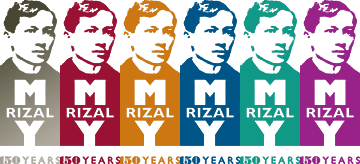
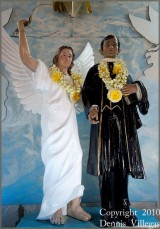
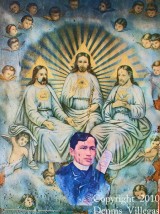
According to my information Dr. Jose Rizal is indeed a great person, a great soul. He was born a third degree initiate like Jesus when He was born in Bethlehem. Dr. Rizal, when dies on Dec 30, 1896 fulfill his mission and also attained and finished his fourth initiation. On Dr. Rizal’s next incarnation He finished His Fifth Initiation and become a Master Of Wisdom. At present He continue helping some groups of healers here in the Philippines.(For more info about the subject on Initiations please visit http://www.shareintl.org. Thank you.